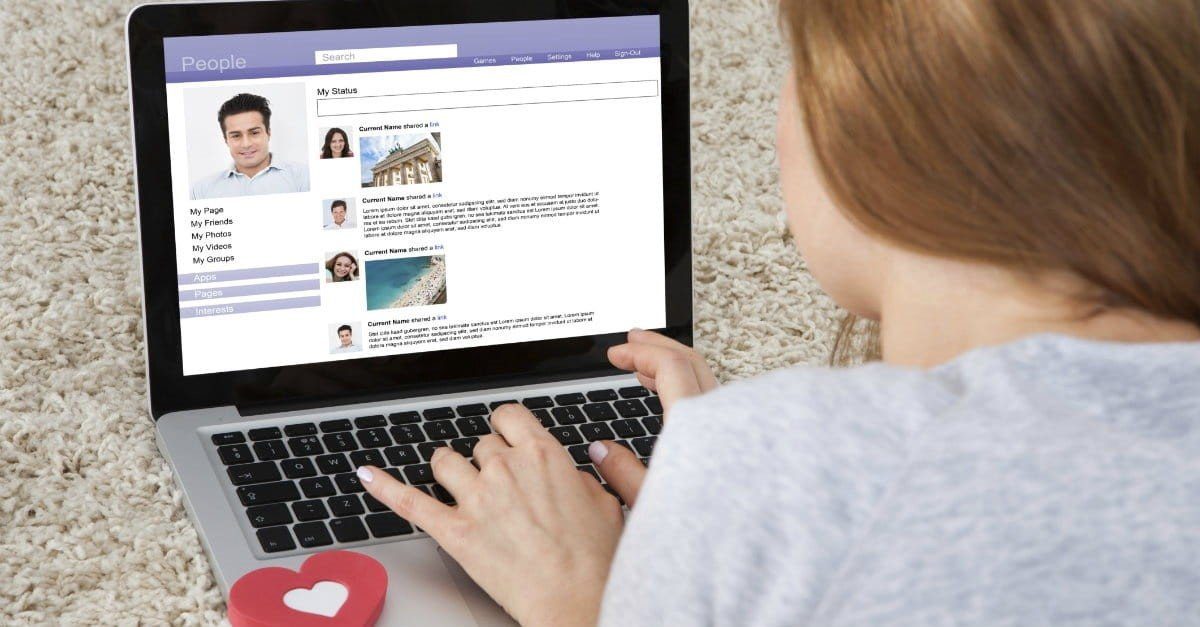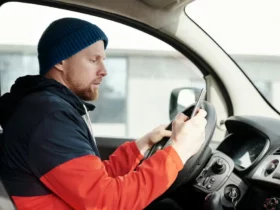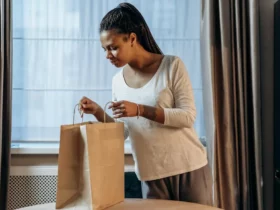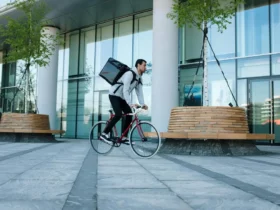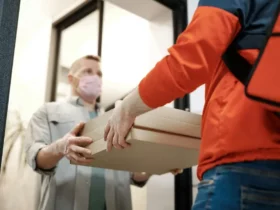When I stumbled upon the term “DoorDash Red Card,” I’ll admit, I was scratching my head. What’s this flashy little card all about? Well, I’ve done my homework, and I’m here to share the scoop with you. It’s a neat tool in a Dasher’s arsenal, and if you’re curious, you’re in the right place.
The DoorDash Red Card isn’t your garden-variety credit card. It’s a specialized payment card that DoorDash equips its drivers with. They use it to pay for your food orders, making the delivery process smoother than your morning latte. Let’s dive into what makes this card as red-hot as it sounds.
Introduction to the DoorDash Red Card
Purpose of the Red Card
The DoorDash Red Card is an essential piece of logistics within DoorDash’s food delivery ecosystem. Designed exclusively for use by Dashers—that’s what they call us delivery drivers—the card streamlines the payment process for orders at select eateries that don’t have an existing partnership with DoorDash. On some tantalizing occasions, I may find myself at a restaurant that doesn’t accept prepaid orders. That’s where my trusty Red Card comes into play.
Interestingly, I discovered this isn’t a traditional credit card. It’s a specialized tool provided in my activation kit, which also included a nifty hot bag to keep meals at the right temperature and a starter manual to guide me through my new gig. My first briefing made it clear: the Red Card’s only job is to manage payments for customer orders at specific restaurants. It’s basically the lifeline for completing certain transactions—without it, I’d have to turn away from a handful of opportunities to earn.
Differences from Other Payment Methods
I’ve encountered various payment methods while dashing through the streets, but the DoorDash Red Card is quite unique. Unlike regular credit cards, it can’t be used for those out-of-work splurges—strictly business, as they say. It also stands apart from another card that DoorDash offers: the DasherDirect card. This white-colored Visa variant is more in line with personal debit cards, rewarding Dashers with cashback and other perks.
I was initially a bit stumped when I learned that the Red Card is preloaded and can’t be used for tips or personal purchases. Above that, I remember being advised during my initial training to avoid selecting ‘Debit’ as a payment method since the card holds no PIN—a handy tip that saved me from a few puzzling moments. And there lies its distinction: this red-tinted piece of plastic is our doorway to access specific orders that would be unreachable otherwise, enhancing our capability to deliver delight to our customer’s doorsteps.
On each delivery run, I ensure it’s tucked safely in my wallet, ready to be swiped for that next order waiting to be claimed.
Activation and Setup of the Red Card
Getting your DoorDash Red Card up and running is a critical part of being a Dasher. It’s not just about having it in your wallet; it’s about setting it up properly so that you’re ready to take on those orders that require a bit of extra step at checkout. Let me walk you through the activation and setup process—it’s simpler than it sounds!
Step-by-Step Activation Process
When I first got my Red Card, I was eager to hit the ground running. Here’s a breakdown of how I activated it:
Using the Dasher App for Activation
The Dasher app is the key to everything. It’s where I managed to activate my Red Card without a hitch. Whether I’m using an iPhone or Android, the app guides me through each step:
- I tapped on the app icon and logged in.
- I then found the menu icon, usually located at the top-left corner, and tapped on it to reveal the dropdown options.
- I selected “Red Card” from the choices provided.
- Next, I entered my card’s details—the Delight number and the last four digits, making sure I got them right.
- I followed the prompts to complete the process, and voilà, my Red Card was activated!
Troubleshooting Common Activation Issues
I won’t sugarcoat it—sometimes things can go a bit awry. If I ran into trouble during activation, here’s what I’d do:
- Check for any incomplete steps in the signup process; it’s easy to miss something along the way.
- Confirm that my internet connection is stable since spotty WiFi can throw a wrench in the works.
- Double-check that I entered the right card details. Typos can happen to the best of us.
- If nothing works, a good old app restart or even a reinstall could be the charm.
- And if all else fails, reaching out to Dasher support is my next move. They’re there to help Dashers like me get back on track.
With the Red Card ready, I’m all set to accept those orders that need an extra personal touch at the restaurant, paying for the customer’s meal and ensuring the delivery experience is smooth from start to finish. It’s one of those little things that make a big difference in being an efficient Dasher.
Utilization of the DoorDash Red Card
Situations Requiring the Use of the Red Card
I’ve found that a Dasher like me will typically need the Red Card in a few specific scenarios. Some restaurants, instead of receiving payment in advance, prefer to accept payment only at the moment of pickup. That’s where the Red Card comes in handy – it allows me to pay for these non-prepaid orders on behalf of DoorDash. Sometimes, I might also receive orders that involve multiple item pickups, and the Red Card is essential for completing these transactions. Moreover, orders that I can get closer to my location or that snag me the best deals frequently require the use of the Red Card. Ensuring that I can efficiently manage these situations underscores the card’s value within the delivery process.
How the Red Card Works for Dashers
Process of Paying for Orders
When I’m out delivering with the Red Card, the process can be likened to using a standard debit card, but for DoorDash orders only. Once I receive an offer and recognize it’s a Red Card order, there’s a sequence to follow. After arriving at the store, I let the app know I was ready, began shopping, and then tender payment at checkout with the Red Card. Scanning item barcodes for match confirmation is also part of the process, ensuring accuracy for the customer’s order.
Understanding Fund Allocation for Orders
The Red Card operates through a specific fund allocation per order. It’s preloaded with the exact amount needed for each transaction, which is automatically calculated by DoorDash. This means I don’t need to worry about budgeting or overspending, as the card will only authorize payment up to the set order amount. It’s a sophisticated system that allows for seamless, no-hassle payments for orders that call for an extra step at checkout, making sure that everything runs smoothly both for me and the customer.
Restrictions and Misconceptions
Misconceptions About the Red Card
There are quite a few misunderstandings floating around when it comes to the Red Card. One big misconception is that possessing a Red Card will lead to more delivery opportunities. Let me clarify that while the Red Card does open doors to a variety of merchants, it doesn’t guarantee an increase in the number of orders I’ll get. It merely provides the potential to broaden my delivery scope. The quantity of orders I receive isn’t influenced directly by the Red Card; it’s more about what’s available in my area at any given time.
Another misunderstood aspect is that some believe the Red Card equates to more income. This can be true, but it’s not a rule. Whether I earn more or not depends on various factors like restaurant speed, customer tips, and the type of food I’m delivering. Higher-cost meals and generous tipping can indeed boost my earnings, but this outcome isn’t a direct consequence of the Red Card itself.
Prohibited Uses of the Red Card
Personal Use Restrictions
It’s important to stick to the rule that the Red Card is for DoorDash orders only. Using it for personal expenses is a definite no-go. It’s tempting to consider it for personal purchases, especially when I’m on the go and need a quick payment method. However, misusing the card can lead to serious consequences, including possible deactivation from the DoorDash platform. It’s not just a policy—it’s about maintaining trust and ensuring that all transactions are purely for customers’ orders.
Ensuring Compliance with DoorDash Policies
The trust DoorDash places in me by giving me a Red Card comes with the responsibility to adhere strictly to their policies. Compliance is ensured through the mandatory submission of itemized receipts for each order I pay with the Red Card. These receipts are critical evidence that I’m using the card appropriately. DoorDash monitors transaction records and uses the receipts to prevent and detect any misuse.
This meticulous oversight ensures that all Dashers use the Red Card as intended—for the customers and the smooth delivery of their orders. If, for any reason, I encounter a problem with a Red Card transaction, it’s my duty to reach out through the app for support to keep everything transparent and above board. The checks and measures put in place are not to make life harder for Dashers but to maintain a reliable security service and guarantee that our focus is on delivering quality service to our customers.
Handling Red Card-Related Issues
Dealing with Declined Transactions
I’ve come across my fair share of declined Red Card transactions, and believe me, it can be quite the headache. But there’s no need to panic. Here’s what I do: First, I’ll force quit the Dasher app and relaunch it—that sometimes does the trick. Second, if the card is still being declined, I’ll contact DoorDash Support right away to talk about reimbursement. And, if I’ve had to pay out of my own pocket—which, let’s be honest, isn’t ideal—I make sure to keep the itemized receipt and take a photo for proof.
It’s also worth noting that sometimes the solution is as simple as waiting a few minutes before asking the cashier to swipe the card again. And if I suspect that there’s something wrong with the DoorDash system itself, checking with DownDetector can confirm if there’s a widespread issue.
One tip from experience: never use your own funds by default. DoorDash has specific steps in place for reimbursement, and it’s way better to resolve the issue through the proper channels to avoid any confusion down the line.
Steps for Reporting and Replacing Lost or Damaged Red Cards
Nobody’s perfect, and losing a Red Card or dealing with a damaged one is something many of us Dashers are all too familiar with. Here’s the step-by-step process I follow when that happens: Open the Dasher app, tap the menu icon, and select ‘Red Card’ from the dropdown. Here, I enter the card’s delight number and the last four digits of the new card before saving the changes.
If my Red Card is lost or stolen, I log into the Dasher app, head over to the menu, tap on ‘Red Card’, then select ‘Mark as Lost’. Remember, while you can’t get a temporary Red Card, DoorDash makes it pretty hassle-free to get a replacement sent out to you.
DoorDash offers various shipping methods for the replacement card via the United States Postal Service. It ranges from the standard USPS first-class mail, which is free but without tracking info, to Priority Mail, where you pay a bit more but get that precious tracking number.
And here’s a little nugget of wisdom: it’s better to be safe than sorry, so I order an additional card as a backup. That’s one of those little things I’ve learned that can save a lot of stress in the long run.
In the meantime, if I’m without a Red Card, I can still make deliveries! I just have to make sure I don’t accept orders that require one until my new card arrives.
Benefits for Dashers
Enhancing Earning Potential with Red Card Orders
When it comes to boosting my earnings with DoorDash, I’ve found that having a Red Card really opens up the playing field. Not only does it give me access to a larger set of restaurants, but it allows me to accept a variety of orders I otherwise couldn’t. DoorDash instantly loads the customer’s payment onto the Red Card after they’ve placed an order, meaning I don’t have to worry about my personal bank account at pickup. Payments are smooth, and I get to keep 100% of the tips, which is always a nice perk.
By expanding my reach to restaurants without direct billing with DoorDash, I’ve increased my chances of getting orders with potentially larger totals—and in the food delivery business, higher totals often lead to better tips. I’ve noticed that some Red Card-required establishments tend to be pricier, so not only do these orders boost my total earnings, but they can sometimes lead to better tips.
Impact of Red Card on Dasher Experience and Earnings
Carrying a Red Card while dashing has significantly shaped my experience. I’ve found a direct impact on my earnings; since I can shop for multiple items to find the best deals and pick up orders that are closer to their delivery locations, I deliver more efficiently. The faster deliveries generally contribute to happier customers and, therefore, may lead to higher ratings or extra tips.
Despite the perks, there are trade-offs, such as the extra time it takes to handle payment transactions. However, by strategically selecting Red Card orders, I can minimize any additional time or complexity. This might mean picking restaurants where I know orders will be ready quickly or mapping out a route that allows me to fulfill several orders in one loop.
To make sure I’m always earning top dollar, I track my income closely from both Red Card and non-Red Card orders. It’s key to adjust my acceptance rate accordingly. For instance, if I notice that I’m earning more per hour on Red Card orders, I’ll prioritize those when they’re available. The goal is always to strike the right balance to maximize my earnings while keeping stress to a minimum.
In essence, the impact of the Red Card on my earnings is measurable: it not only helps me step up my earning potential but also influences the overall Dasher experience in a positive way. My role involves carefully managing these opportunities to ensure I’m making the most of my time on the road.
Conclusion
As I dive deeper into the intricacies of the DoorDash Red Card, I’ve noticed that it serves as more than just a convenience for customers. It’s a tool that can significantly alter the dynamic of a Dasher’s job. While it certainly opens the door (pun intended) to a wider array of restaurants and, in turn, diversifies the earning opportunities, it’s not without its challenges.
Having a Red Card in my arsenal also brings an unexpected perk – it smooths entry into otherwise inaccessible locations like secure apartment buildings. It’s these small efficiencies that can enhance my delivery process. However, the tote bag that comes with it, while a nice touch, isn’t the sturdiest. I’ve had my own experiences with less-than-durable zippers, and I’ve come to realize that the quality of the bag may not be up to par with some heavier deliveries.
While it’s clear that there’s no one-size-fits-all approach to using the Red Card, it’s an integral part of the Dasher toolkit. Balancing efficiency with opportunity is key, and as Dashers, we’re constantly learning to navigate these challenges, one delivery at a time.
FAQ – Frequently Asked Questions
What should I do if my Red Card is declined?
If your Red Card is declined, first check the app to confirm that the order requires a Red Card. If the card still doesn’t work, sign out of your account, uninstall the app, wait a few minutes, then reinstall and try again. If issues persist, contact DoorDash support.









